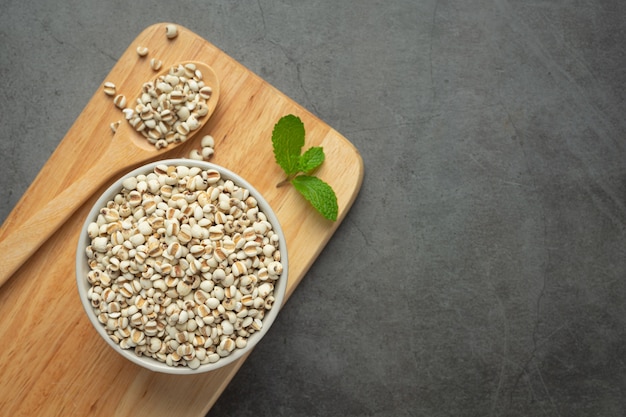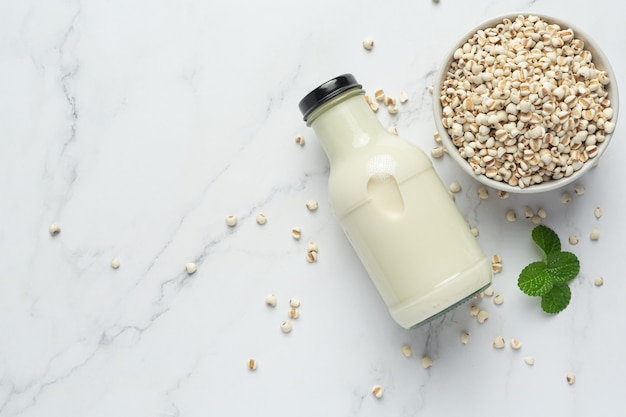YUMMY VALLEY’S SALE 🎁
Free Millet Mojo Snack With Millet Muesli & Porridge Mixes
COD Available for Orders Above ₹299
- Your cart is empty
- Continue Shopping
Millet Health Mix for Babies: All You Need to Know
- Published on:
- Last update: 13 November 2023
- This post has just been created. Stay tuned for updates and additional content.

Millet Health Mix for Babies
Millet Health Mix is a nutritious baby food that is rich in vitamins and minerals. Your doctor or nutritionist has probably told you that a baby’s diet is instrumental to their growth if you’re the parent of a baby or toddler. I couldn’t agree more! Your baby’s diet will influence his or her physical health and shape his or her dietary habits. Healthy foods are therefore very important to provide for your baby from a young age. In terms of nutrition, millet is one of the healthiest foods you can include in your baby’s and adult’s diet. Furthermore, it is one of the most versatile ingredients to use in cooking. Check out the following for when and how to introduce millet to your baby’s diet!
Millet: What is?

The gluten-free, high-fiber grain of millet is a nutritious, highly digestible, highly nutrient grain that is also easy to prepare and is rich in fiber. Many people are allergic to millet, but none have reported adverse reactions to it. The size and shape of buckwheat are extremely similar to those of barley, but it contains higher levels of fiber, which makes it easier to digest. Aside from vitamins, minerals, and proteins, millet is also considered a superfood because it is rich in potash, calcium, iron, magnesium, and phosphorus.
In India, what varieties of millet are available?
This versatility can be attributed to the fact that millets can be used to make all sorts of different dishes, from idlis to millet cereal for babies. Because millets have a wide range of varieties, there are many foods that can be made with this superfood. In India, the most common millets are:
- Millet Foxtail
Foxtail millet is commonly found in India, where it is known as Kakum or Kangni. You can control blood pressure and cholesterol levels with this type of millet.
- Millet Pearls
In India, it is called Bajra and is the most common millet. The type of millet grown in this region is reputed to help manage and prevent type 2 diabetes in humans. Additionally, it has a high magnesium content.
- Millet finger
In Southern India, specifically in the state of Karnataka, this millet is known as Ragi. The digestibility and nutritional value of finger millet make it popular among babies.
- Kodo Millet
The millet is rich in polyphenol, a type of antioxidant, fiber, and is low in fat, making it a common diabetes-management ingredient. Kodra or Varagu are the names of the millet varieties.
- Little Millet
Besides being rich in iron, fiber, and antioxidants, this type of millet is also known for its ability to prevent stomach disease and diabetes. Saamai or Kutki are its local names.
- Barnyard Millet
In addition to being extremely high in fiber, phosphorus, and calcium, Jhangora or Kuthiravali is rich in phosphorus.
- Sorghum Millet
This millet is commonly referred to as Jowar, and it is one of the easiest to find and one of the most commonly eaten millets in India. It contains unrefined fat, protein, calcium, and minerals like phosphorus and potassium. Micronutrients and antioxidants are also plentiful.
Can infants eat millet?
When cooked correctly, millet is extremely safe for infants. These grains are packed with antioxidants, protein, vitamins, and minerals. Due to their easy digestibility and gluten-free status, it is extraordinarily unlikely that your child will be allergic to millets.
What is the best time for your baby to eat millet?
When your baby is around 6 months old, he or she can begin eating millets. Millets are a new ingredient, and as with any new food, as you introduce it to your child, you should do it slowly. You can begin by giving them a small amount and gradually increasing it.

What is the best millet for babies?
There is a wide range of millets that are great for babies; the easiest to prepare and digest are pearl millet, foxtail millet, and sorghum millet. If you want more specific information about millets that can be fed to your child, speak with a nutritionist or doctor.
Babies can benefit from millet’s health benefits
There are numerous health benefits associated with millet, due to its high nutritional value. Listed below are some of these benefits.
- Aids in digestion
Among the nutrients that aid in digestion, fiber is one of the most important. Millet contains a lot of fibre. Besides being rich in antioxidants, millet also prevents stomach bugs with its antimicrobial properties.
- Healthy bones
Calcium is one mineral that millets are high in, this mineral is important in helping the baby develop strong and healthy bones.
- Promotes muscle recovery
Muscle fatigue occurs when your baby’s muscles are used in different ways as they develop. Protein is essential for muscle recovery, and millets are a great source of protein and healthy for babies.
- Boosts metabolic rates
Phosphorus is a mineral that is crucial to breaking down and metabolizing fats, and it is also required to repair damage to tissue. Phosphorus is abundant in millets.
- Helps prevent anemia
You can prevent your baby from becoming anemic by eating millets, as they are rich in iron.
- Facilitates weight loss
Because simple carbohydrates take longer to digest, millet is a good source of healthy carbohydrates for your baby. The body does not easily digest these carbs, which keeps your baby fuller for longer. Additionally, it helps your baby lose weight.
Conclusion
Millet Health Mix is really good for your baby as it helps to improve health and fight off certain health conditions. Millet Health Mix is easily available from Yummy Valley and a variety of recipes can be tried out for fun and nutritious baby food.
Millets are superfoods, but they cannot be the sole component of your child’s diet. Your child’s meal plan should include other healthy ingredients. Your dietician or nutritionist can help you determine the nutritional requirements of your child and how millets can be incorporated into their diet.
If you want to learn how this mother handles her fussy eating baby, click here!

